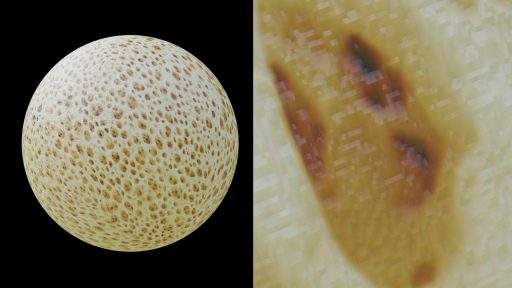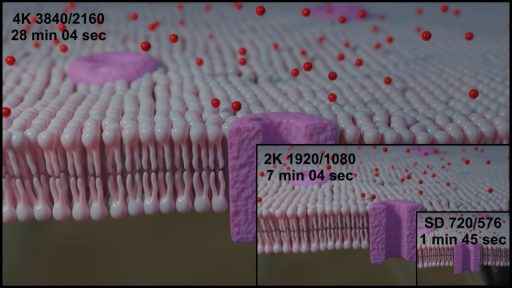2k or 4k
Written by Craig Vrankovich
When deciding to commence production of a 3D medical animation I believe it is important to consider the resolution of your footage for the purposes of providing your audience with the best viewing experience possible.
More and more often I am being asked whether a medical animation or video should be created in 2k vs 4k. Below I explain some things you should think about when you are looking at creating a medical animation or any kind of video production. There are quite a few different resolutions out there now but to keep this simple 2k refers to the standard resolution you find on TVs and computer monitors which is 1920/1080 (also referred to as 1080p) and 4k resolution 3840/2160 (also referred to as UHD) which is becoming more popular with larger TVs, computer monitors, and mobile devices.
When I first started creating medical animations back in 2005 the thought of 2k or even 4k TVs was absurd. “Who would need that?” people would say. Now in 2019, we are contemplating 8k TVs, most mobile devices can play media up to 4K and the price of 4k computer monitors is dropping drastically.
Oh, how times change. So what kind of impact does this have on the production of medical animations in regard to costs and production times?

For the first few years of my career, I was creating medical animations at 720/576 or standard definition. Remember your old tv with the curved glass screen? The animations back then didn’t have anywhere near as much detail in the models or textures but that has changed now. With higher resolution computer monitors, mobile phones and TVs allowing you to see more detail, more work and effort is put into creating the 3D elements used in producing an animation.

In the images above the same texture has been used on each side.
You can see on the left that the texture looks nice and crisp. On the right once zoomed in the texture starts to pixelate.
This is a common problem when objects are close to the camera in high-resolution animations meaning even though you may only be rendering to 2k resolution you may need to create textures at resolutions up to 16k and even higher.
One thing this does affect is the rendering time needed to create the final animation. The rendering time from 2k vs 4k goes up by a factor of about five. Hence the reason for the 20 computers I have churning away animations for me in the background.

The image above shows the size difference between 4k, 2k, and Standard definition. You can also see that the render times are quite a bit different for each one. This can have an impact on deadlines so If you need your animation in a hurry 2k may be the only option.
Cost between 2k and 4k
So, what is the cost difference between creating a medical animation in 2k vs 4k?
It is hard to say as every animation is different, but I think a ballpark of around 10-15% extra to produce an animation in 4k would be a safe guess.
Now that we know a little more about producing medical animations in 4k, should you bother?
I believe it depends on your budget, deadline, and your intended use of your animations. If it is just going to be an internal video presentation then 2k should be fine. But if you think that you may want to show it on a large projector or on a high-resolution TV or even on YouTube which has supported 4k videos for a while now then it would be worth considering.
There is also a cost advantage in producing the animation in 4k now. While you may have a slight cost increase over 2k, the cost of converting a 2k animation to 4k is considerably higher; perhaps anywhere up to 50% of the cost of the original animation. This is of course dependant on what is in the animation.
From Wikipedia
By 2020, more than half of U.S. households are expected to have 4K-capable TVs
This gives your medical animation a far longer lifespan. It is easy to show a 4k animation on a 2k screen, most screens will downsize the footage seamlessly so that the viewer shouldn’t notice any difference. However, showing a 2k video on a 4k screen means it must be upsized and that can result in a loss of visual quality.
Current television technology can do a good job of up displaying 2k footage to fit on a 4k screen, but you are still going to lose quality. This would be even more evident on larger screens or projectors.
I would not expect that 8k devices will be mainstream for a while yet so unless you plan on showing your medical animation in the very far future, I think that 8K quality may be overkill.
I recommend having a good think about how you plan on using your medical animation over the next couple of years so producing them can be as cost-effective as possible for you. It would be worth having a chat with us about your medical animation and seeing how we can best accommodate your needs.
If you are thinking about creating a medical animation feel free to contact me and we can discuss this and come up with a solution that best suits you.
info@highbeamstudios.com
